Jun
24
2013
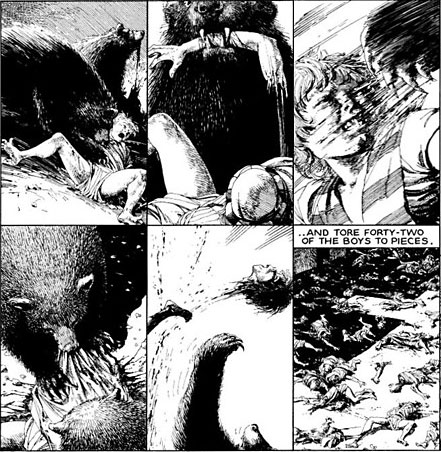
or Who Is The Real Jericho?
Atheists love to embarrass Christians with a snide reference to the story of Elisha setting two bears upon some helpless children. What nobody, even Christians, seem to get is the “Covenant significance” of all the players in the story, harking back to Moses. The prophets were, after all, God’s “repo men.” [1]
[This post has been refined and included in Sweet Counsel: Essays to Brighten the Eyes.]
Continue reading
Comments Off | tags: AD70, Covenant curse, Covenant Theology, Egypt, Elisha, Feasts, Herod, Jericho, Jezebel, Kings, Leviticus, Peter Leithart, Pharaoh, Revelation | posted in Apologetics, Bible Matrix, Biblical Theology, The Last Days
Jul
17
2010
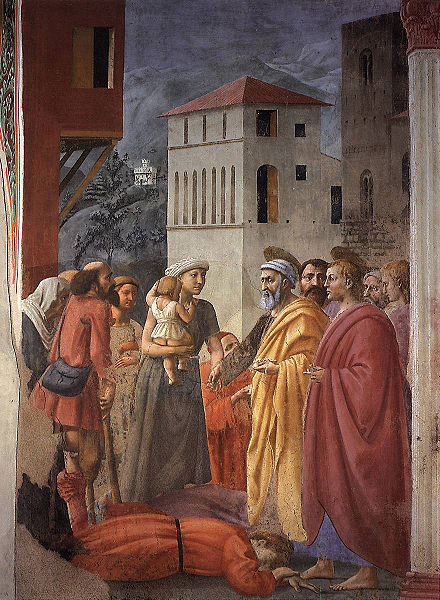
But each one is tempted when he is drawn away by his own desires and enticed. Then, when desire has conceived, it gives birth to sin; and sin, when it is full-grown, brings forth death. (James 1:14-15)
The structure of God’s work in the world finds its origin in His trinity: Word, Sacrament, Government (Discipline). Often in the prophets, the man of God is given a sign which is a type of a greater event to come. The prophet is the sacrament that mediates the Word of discipline to the People.
Continue reading
Comments Off | tags: Abraham, Acts, Atonement, Balaam, Communion, Genesis, Isaiah, Jezebel, Judas, Moses, Replacement Theology, Totus Christus, Typology | posted in Biblical Theology, The Last Days
May
13
2010
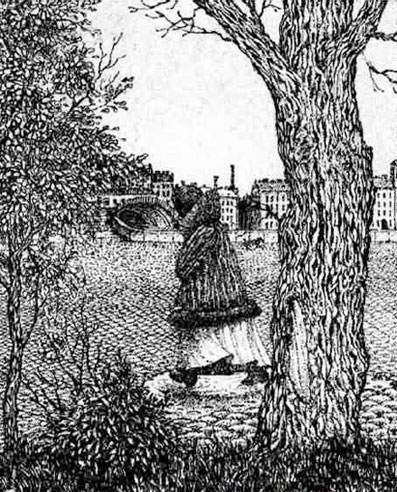
or Jesus, the Destroying Angel
James Jordan says the Revelation is like one of those old human anatomy teaching aids, the ones with layers of acetate. One starts with the skeleton and overlays the nervous system, arteries, organs, etc. They are all connected and yet each is a system that is individually identifiable. This is literature that is irreducibly complex.
Continue reading
1 comment | tags: AD70, Creation Week, James Jordan, Jericho, Jezebel, John, Lampstand, Literary Structure, Revelation, Totus Christus | posted in Biblical Theology
Apr
9
2010
Band of Brothers – 2
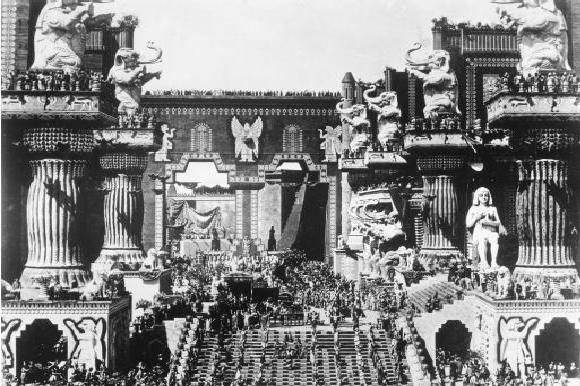
Part 1 here.
One thing the Bible Matrix demonstrates is the nature of history. Sure, it repeats itself. Everyone knows that. But our personal histories are microcosms of the lives and deaths of families, churches, nations and empires. Reading the Bible is like looking through a glass onion.
Continue reading
Comments Off | tags: Abel, Ahab, Bible history, Bible Matrix, Cain, David, Firstfruits, Genesis, Herod, Jezebel, Jonathan, Lamech, Postmillennialism, Revelation, Seth, Solomon, Systematic typology | posted in Biblical Theology, The Last Days, Totus Christus
Mar
16
2010
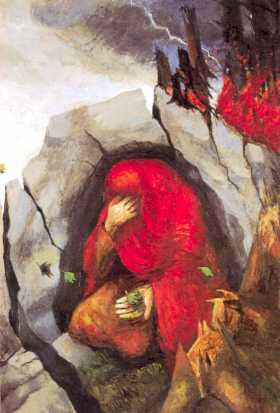
or Sinai Unspoken
On Mount Carmel, Elijah had built an altar of 12 rough-hewn stones. They substituted for the tribes of Israel. They were built and then consumed. The priests of Baal were slain and “washed” in the brook as atonement. The Land was clean. But we know Jezebel trampled this sacrifice underfoot. [1]
Elijah headed for the wilderness. He was a man with a mission. He went to the same cave in which Moses stood, a cleft in the rock. Once again, the Lord “passed over.” He was making a new Covenant, a new Creation, a new Heavens and a new Land.
Continue reading
Comments Off | tags: Azal, Cain, Elijah, Elisha, Ezekiel, Feasts, Hebrew, Jezebel, Tabernacle | posted in Biblical Theology, The Restoration Era
Dec
8
2009

I say then, has God cast away His people? Certainly not! For I also am an Israelite, of the seed of Abraham, of the tribe of Benjamin. God has not cast away His people whom He foreknew. Or do you not know what the Scripture says of Elijah, how he pleads with God against Israel, saying, ”LORD, they have killed Your prophets and torn down Your altars, and I alone am left, and they seek my life”? But what does the divine response say to him? “I have reserved for Myself seven thousand men who have not bowed the knee to Baal.” Even so then, at this present time there is a remnant according to the election of grace. Romans 11:1-6
Romans 11 is one of those watershed passages. How one interprets it depends on one’s “plan of the ages” paradigm. If you haven’t read James Jordan’s The Future of Israel Re-examined, you need to. Due to its ramifications for interpretation of much of the New Testament, I believe it should be recognised as one of the most important writings of our time. It puts Romans, and especially chapters 9-11, fairly and squarely within a first century context. All would be fulfilled before AD70. God would make “a short work” in the Land. And He did.
It also helps with the interpretation of Revelation. Christ was a new Moses, just as Elijah was. He ascended and gave a double portion of His Spirit to the church as Elisha. The new body witnessed to Gentiles to provoke the hard-hearted Jews to jealousy. This has nothing to do with our day. It was a process confined to the end of the Old Covenant.
Continue reading
Comments Off | tags: Balaam, Hermeneutics, Herod, James Jordan, Jezebel, Paul, Romans | posted in The Last Days
Dec
1
2009

Elijah’s twelve stone altar “died” in the place of Israel, paying the debt for her idolatries, burned to nothing as a priest’s daughter who had committed harlotries. That passage follows the Bible matrix, with the prophets of Baal slaughtered as the scapegoat (washed from the Land in the “Laver” of Kidron, no less).
Did Ahab and Jezebel repent? No, they filled up their sins.[1] So Elijah made an exodus to Sinai. This, too, follows the pattern. Elijah is a new Moses, and he makes a new Covenant for the remnant which will bring about the destruction of Ahab’s dynasty. His “new creation” will be built on the corpse of the old.
Continue reading
Comments Off | tags: Ahab, Bible Matrix, Covenant curse, Elijah, Jezebel, Moses | posted in Biblical Theology, Totus Christus
Nov
7
2009

All the names and the numbers in Revelation are symbols based on historical facts. The names are easy. Jezebel, Antipas, Balaam… But we mathematical moderns have trouble taking numbers as symbols. We are only interested in descriptions, not relationships. In the Bible, symbols describe relationships. As David Chilton observes in The Days of Vengeance [PDF], the symbolic value of someone or something is not a description of its nature, but a description of its relationship to someone or something else. Hence, as Jordan observes, Satan is both a dragon and a serpent in Revelation 12. He is a serpent to the Woman and a dragon to her children. Continue reading
3 comments | tags: 666, Balaam, David, Jezebel, Millennium, Peter Leithart, Revelation, Temple, Typology | posted in Biblical Theology, The Last Days
Jul
15
2009
or Limited Redemption
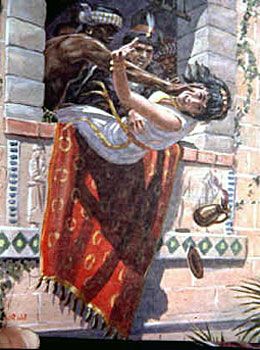
“For if we sin wilfully after that we have received the knowledge of the truth, there remaineth no more sacrifice for sins” - Hebrews 10:26
NOTE: THIS POST HAS BEEN REMIXED AND INCLUDED IN GOD’S KITCHEN.
Did Christ die for all? If Jesus’ blood was not shed for all, how can it possibly be a sin to “trample it underfoot” as the unbelieving Jews did? (Hebrews 10:29)
Elijah set up a 12 stone altar as a substitute for Israel. The sacrifice ascended to the Lord (goat #1) and the prophets were slain (goat #2). Thus, the Baal worship was atoned for.
But Jezebel trampled this sacrifice underfoot, and continued in sin. In retaliation, she slew the prophets that Obadiah had hidden. Consequently she was trampled underfoot. (2 Kings 9:33).
The New Testament history, including the Revelation, follows this pattern. Jesus set up a new 12 apostle priesthood and Israel slew Him and them. Consequently, Israel was slain, as Jezebel. That is the context of the Hebrews passage, and the meaning of the harlot of Babylon.
Continue reading
Comments Off | tags: Ark of the Covenant, Atonement, Calvinism, High Priest, James Jordan, Jezebel, Postmillennialism, Revelation | posted in Biblical Theology, The Last Days
May
30
2009
A House of Bread
There are two kinds of whiteness in the Bible, and an understanding of this explains a great deal. There is the whiteness of covering and the whiteness of uncovering. And, as mentioned, the Bible makes a great deal out of the concept of covering.
Bone Collector
Purge me with hyssop, and I shall be clean; Wash me, and I shall be whiter than snow.
Touching a corpse made an Israelite unclean. The remains of those slain in battle were marked with lime for two reasons: so that they could be avoided by the clean, and so they could be gathered up and burned to lime by the bone collectors. Jesus said that the righteousness of the Pharisees was like a whitewashed sepulchre. Not only were they full of the ceremonial uncleanness of broken Covenant, their so-called righteousness was actually a mark from God upon them. They would be gathered to their people not by the Father sending His angels to the four corners of the Land, but by the father of lies and his scavengers sent by God to clean the wound.
This image goes right back to Genesis. Like the angels, the Covenant scavengers, though demonic, are also God’s servants. They are the raven of Noah surviving on floating corpses until the water goes down; they are the scavenging dogs that lick up Jezebel’s blood; they are the maggots in misused manna and abandoned grapes (false bread and wine); they are the unclean birds and animals that screech and howl inside the corpse of a defeated Babylon; they are worms inside Herod ‘enthroned’ as a human Gehenna.
The whiteness of the Pharisees was the whiteness of Miriam’s and Gehazi’s skin-plague. It is the whiteness of flesh and bones exposed as unclean to the eyes of God. Satan himself appeared as an angel of light, but like the Pharisees, he was a false lightbearer, a tutor guiding his children the wrong way.
Continue reading
Comments Off | tags: antichrist, Boaz, Egypt, Ezra, Herod, Jezebel, Lampstand, Laodicea, Leviticus, Manna, millstone, Pergamum, Pharaoh, Pharisees, Priesthood, Rahab, Resurrection, Revelation, Ruth, Samson, Scavengers, Solomon | posted in Biblical Theology, The Last Days, The Restoration Era


































